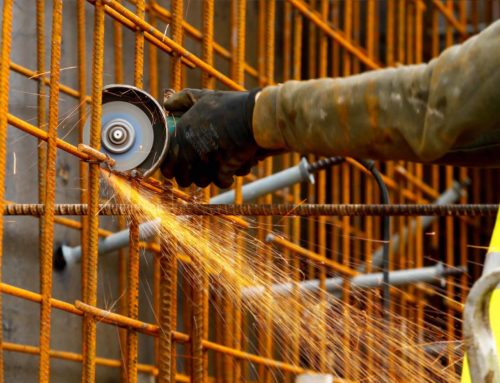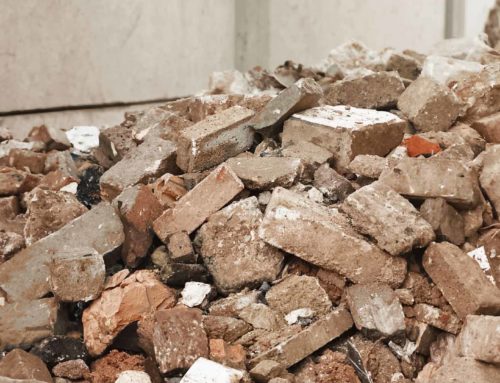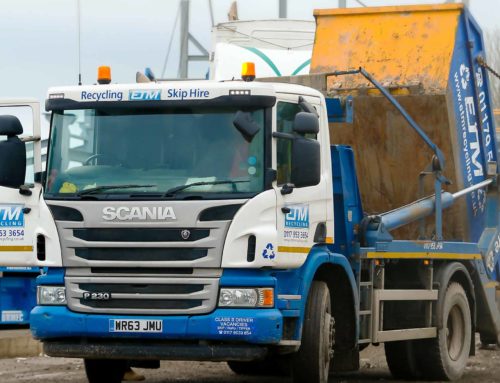Every choice matters when it comes to keeping our environment healthy. Small changes made by businesses can have a major impact. Whether your business is new, old, or in between, it doesn’t matter. It’s beneficial for the planet and your company to know and reduce your effect on climate change. This guide will help you understand how your business can lessen its damage to the climate. We aim to inform you on recycling and better waste management as your solutions.
Introducing your expert waste management partner – ETM Recycling! We’re a significant player in recycling around Bristol and Bath. We have a fleet of lorries that work hard to manage waste. Our goal? To keep Bristol’s waste away from landfills and provide a cost-effective, customer-focused service for you. We offer tailored waste management solutions and expert guidance toward a greener future. Contact us today for advice from Bristol’s leading waste management experts.
What Adds to a Business’s Carbon Footprint?
A business’s carbon footprint is all the gases it releases that cause global warming. These gases include carbon dioxide and methane. Some gases come out directly when the company makes products. Others come out indirectly, like when the company uses electricity. Let’s look at some of the primary sources:
- Energy Use: For most businesses, energy use is the most significant source of these gases. This includes energy used in buildings, making products, and running office equipment. In the UK, the business sector uses a lot of energy, particularly in commercial buildings, which use a lot of electricity and gas. This energy often comes from non-renewable sources.
- Transport and Logistics: Moving products or travelling for work creates a lot of carbon emissions. Using company cars and relying on fuels like petrol or diesel to move goods far away adds to this problem. Some businesses use electric vehicles and better travel routes to reduce these emissions.
- Resource Use and Waste: A business’s use and production of waste also increase its carbon footprint. Creating, using, and disposing of items —from office supplies to factory products —uses energy. The environmental damage is even worse if these materials are not used wisely or recycled.
What is a Digital Carbon Footprint?
A business’s digital carbon footprint includes all the emissions from its digital activities. This is a new area of concern and involves:
- Data Storage and Transfer: You may not think the Internet affects the environment, but it does. Data centres store website data and offer cloud storage use a lot of electricity. Much of this electricity comes from non-renewable sources, which increases carbon emissions.
- End-User Devices: Devices like computers, smartphones, and others use energy during use and disposal. With the latest developments making, using, and throwing away devices increases your digital footprint.
One easy way to reduce a business’s digital pollution is by recycling devices. Companies can start programs to achieve this. Correct disposal keeps harmful materials out of landfills and lessens the need for raw materials to create new devices.
Also, businesses can keep their devices working longer by taking good care of them and updating them when needed. This lowers the amount of digital waste.
These steps help reduce environmental harm from creating and throwing away digital devices. They also promote intelligent business practices focusing on using resources wisely and reducing waste.
Learn more about WEEE and how it is recycled >
The Importance of Recycling in Reducing a Business’s Carbon Footprint
Using suitable recycling methods in business operations is a great way to reduce your carbon footprint. Here are the main benefits of recycling:
- Saving Resources with Recycling: Recycling helps us save raw materials. This means we don’t need to collect and process new materials as much. It conserves resources like trees, water, and minerals and uses less energy to make products. For example, when we recycle paper, we don’t have to cut down as many trees, which helps lower CO2.
- Energy Efficiency: Making products from recycled materials takes less energy than making them from raw materials. For example, making aluminium cans from recycled aluminium scraps uses 95% less energy than making them from new bauxite ore.
- Reducing Waste: When businesses recycle and reuse materials, they send less to landfills. Litter in landfills breaks down and creates methane, a potent greenhouse gas. Reducing landfill use also helps lower the amount of methane that gets into the air.
Check out our recycling & waste management tips for small businesses >
Partnering with ETM Recycling for Efficient Waste Management
ETM Recycling is the leading commercial recycling provider in Bristol and the South West. Here’s how we can help you reach your sustainability goals:
- Expertise and Innovation: ETM Recycling uses modern technology to improve its recycling. This makes it very effective and cuts down on waste.
- Customised Solutions: Every business is unique. That’s why ETM Recycling provides tailored waste management plans. They offer specific recycling programs and help with handling waste at your company.
- Education and Support: ETM offers extensive help and training. They teach companies about their waste and the best ways to manage it, helping build a sustainability culture.
Recycling well and managing waste is crucial for businesses that aim to support global sustainability. Understanding what leads to your business’s carbon emissions, using better digital methods and recycle thoroughly can make a big difference in protecting your environment.
Get in touch with ETM Recycling today to see how we can help your business’ waste management needs.
Related articles:
WHAT ARE THE MOST VALUABLE SCRAP METALS?
























